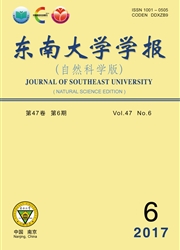

 中文摘要:
中文摘要:
屈曲约束支撑是一种利用金属屈服滞回耗能的装置,具有性能稳定、制作方便、成本低廉等优点。该文通过三根部分焊接屈曲约束支撑试件的低周疲劳试验,探讨了其核心板端部无约束段扭转屈曲的失效模式,并进一步与理论公式进行对比。试验结果表明:屈曲约束支撑核心板端部无约束段的塑性扭转屈曲会导致屈曲约束支撑失效,需要在设计时特别关注;屈曲约束支撑构件的轴向变形对试件的扭转屈曲失效影响显著,轴向变形越大,塑性屈曲临界应力越低,同时施加的实际轴向应力越大;理论公式能够较好的预测屈曲约束支撑端部无约束屈服段的扭转屈曲失效。
 英文摘要:
英文摘要:
A Buckling-Restrained Brace (BRB) is an energy dissipation device of metal yielding and its advantages include the stable energy dissipation capacity, easy construction and fabrication with the low cost, etc. This paper presents the low-cycle fatigue tests of three partly-welded BRB specimens. The torsional buckling failure modes of the unstrained yield segment at the end of the BRB's core brace are discussed and the theoretical formula is compared with the experimental results. Test results show that the plastic torsional buckling induces the failure of the BRB, which should be focused on and taken as an important failure mode. The effect of the BRB's axial deformation on the torsional buckling failure is significant. When the axial deformation is larger, the critical stress of the plastic buckling is decreased and the actual axial stress is increased. Furthermore, the theoretical formula can accurately predict the torsional buckling occurance of an unstrained yield segment.
 同期刊论文项目
同期刊论文项目
 同项目期刊论文
同项目期刊论文
 期刊信息
期刊信息
